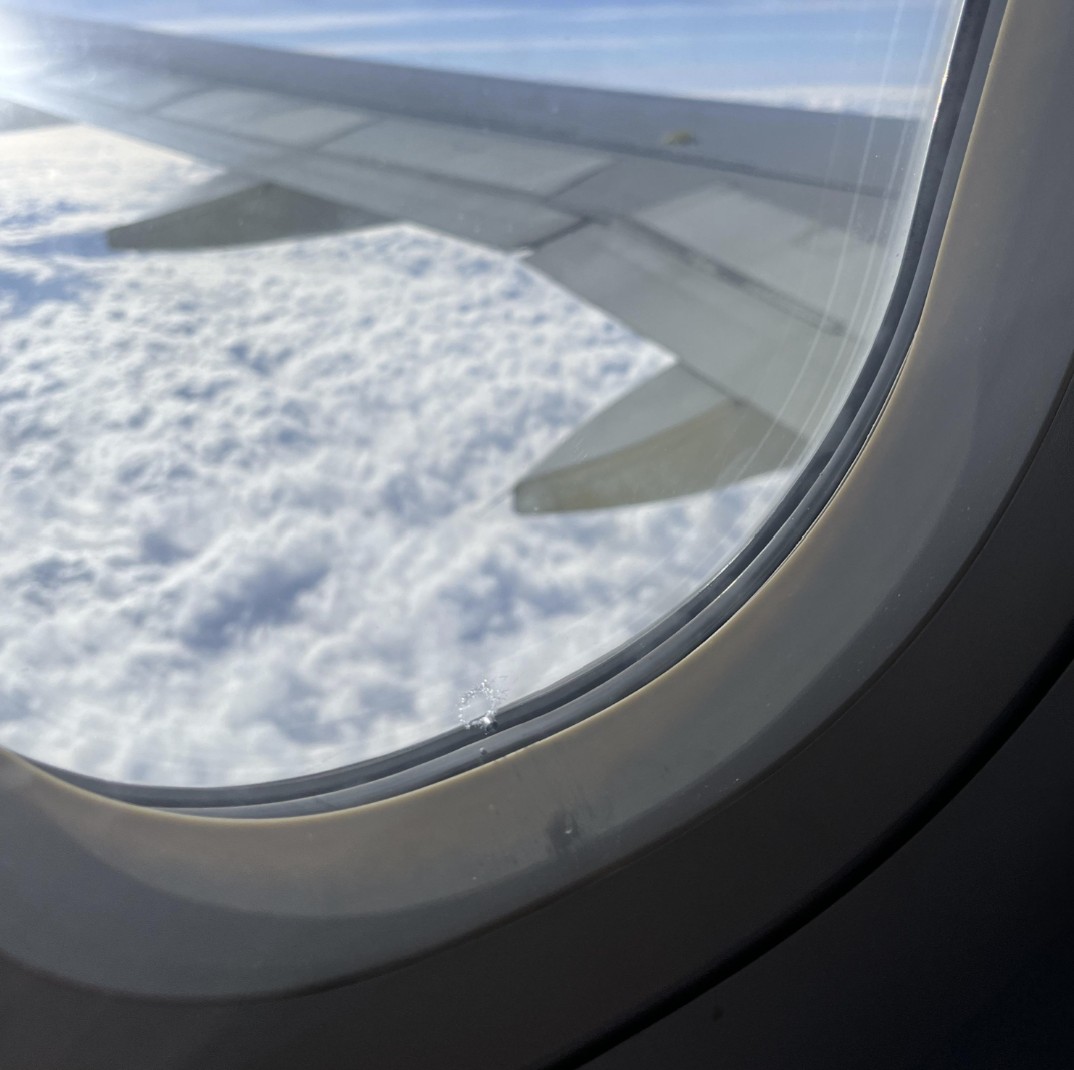Why Do Airplane Windows Have a Small Hole?

source: reddit
Okay, picture this: you’re on a plane, and the tray table is locked, and your head is resting against the window because where else can you move your body? The armrests have become a battleground. And there it is again, that little hole. So weird—little, round, like someone pricked it with a pin. And EVERY time I spot it, I wonder… why is there a hole in a window that is supposed to keep ALL the air in? Isn’t that completely counterproductive?
I asked the same question once, half joking, half serious. I thought maybe the airline just bought cheaper windows. Nope. The hole isn’t a defect at all. It’s just one of those small, microscopic parts of aviation engineering that is working perfectly while you sip on ginger ale and flip through the safety brochure.
That “hole” has a name
It’s not some random defect, it’s officially called a bleed hole or sometimes a breather hole. And yes, it lives in the middle pane of the window. Fun fact: airplane windows are made from more than one slab of plastic. Although it may seem like one piece of plastic, airplane windows are actually three layers. These include: (1) the outer pane, (2) the middle pane (with a hole), and (3) the inner pane which is mainly there to prevent you from scratching the important stuff with your greasy prints or head.
Here’s how the window division works: the outer pane is the heavy lifter. The outer pane is holding back the cabin pressure against the thin, cold air outside. The middle pane is the backup; with a hole (or vent) in it. The middle pane allows the pressure to equalize in a way that makes the outer pane always carry the pressure load. And the inner pane? That is the forehead protection plan.
Why is pressure the big concern that high up?
At cruising altitude (approx. 35,000 feet), the outside air is thin, extremely cold, and not breathable. Ultimately, the cabin pressure is made to feel like you are hanging out at roughly 6,000 to 8,000 feet. This difference is huge. If the windows were single pane, all that pressure would be crashing against one piece of material. Over time, the window material would be weakened. Nobody wants a fragile window at up to half a thousand miles an hour!
The hole is a delicate and important balancing act. The hole allows the middle space between two panes to match the cabin pressure. This ensures that the outer pane carries the load. As a result, the window system can be durable for thousands of flights.

Backup plan
Here is the part of the window divides that I appreciate the most: the bleed hole is also a controlled release. If for some rare, rare reason the outer pane shattered, the middle pane would contribute temporarily to the pressure environment. And (because of the hole) the pressure change would not occur all at once in some dramatic and dangerous pressure explosion. Instead, it would be a slower change. The hole would act as a safety buffer, one that you would never need but you would be grateful to note that it exists.
Oh, and fog control
And one more thing? Fogging. Think about your bathroom mirror after a hot shower; that is the same idea. The warm air from the cabin has hit the cold window and created condensation. Without the hole, this could build between the two panes, eventually blocking your view out of the window. The little vent lets moisture escape so the temperature between the two panes is balanced. This means you can hopefully look up at the clouds (instead of a blurry view).
So no, it is not a leak
People occasionally wonder if air is actually escaping from the hole. Short answer: no. The hole is tiny (less than 2 mm) and it was built along with the whole system in mind. The cabin is kept fully sealed and pressurized. If anything, the hole is what keeps the window structural integrity from failing in the first place!
A little appreciation next time you fly
So yeah, next time you squeeze into a window seat on a plane, you might want to give that little hole a nod. It is not just for looks; it participates in a remarkably complex system. This system makes sure you are safe and comfortable while gazing out the window.
I used to think the windows for an airplane were just that: a window for sightseeing out of an airplane. Now, I see an airplane window as a little engineering marvel, with the little bleed hole working much harder than I had appreciated. It helps make the whole flying experience less mundane and slightly more special.